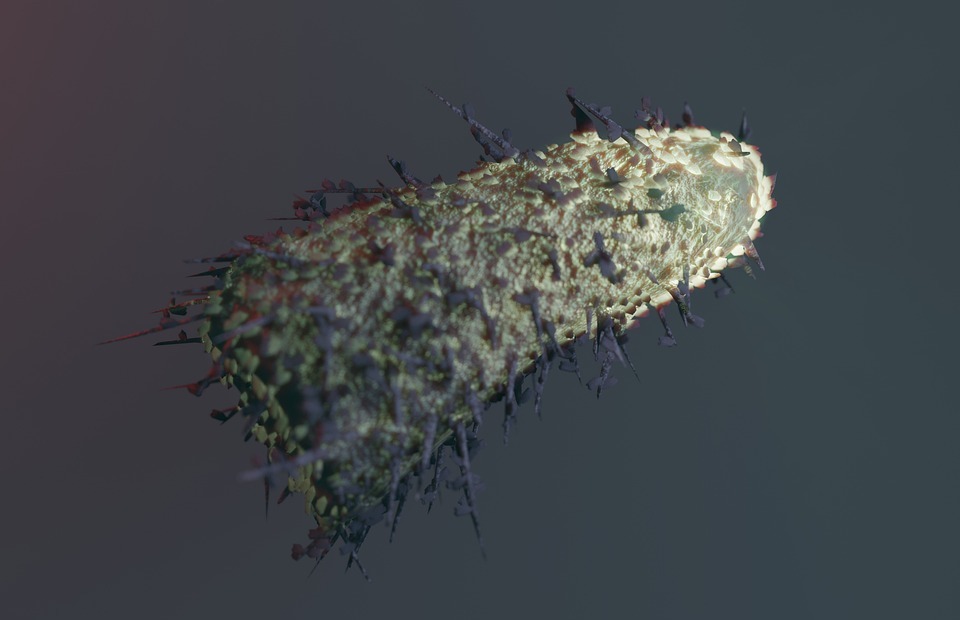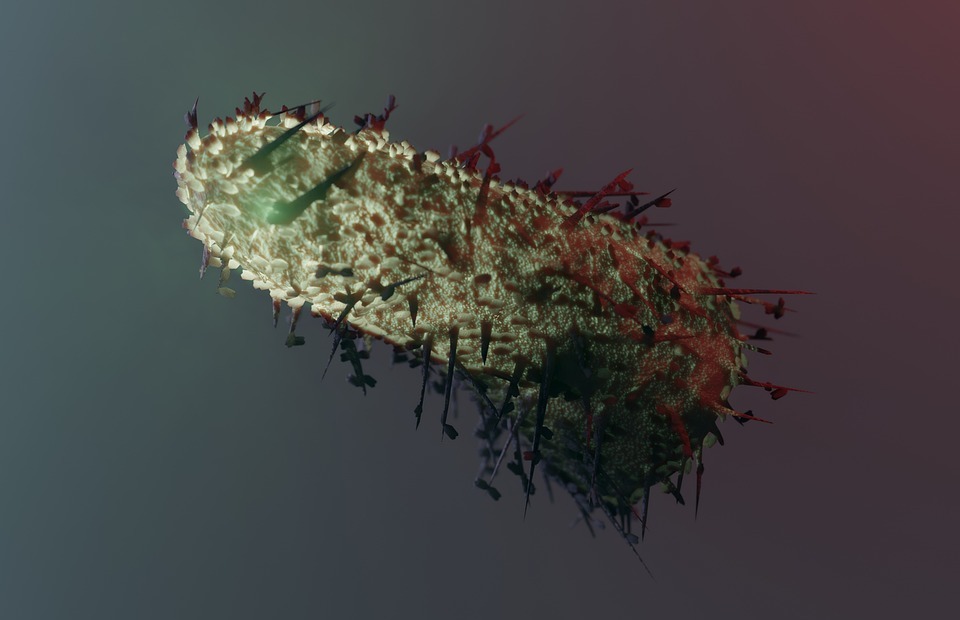This article provides a detailed overview of rabies, its potential impact on rabbits, and the measures you can take to protect your beloved pet and yourself. We will cover the nature of the virus, how it affects rabbits, the tell-tale signs to watch for, diagnosis, treatment options, and crucially, preventative measures to keep your rabbit safe. This comprehensive guide equips you with the knowledge to ensure the well-being of your furry companion and your own safety.
Part 1: Understanding Rabies

1.1 Rabies: A Zoonotic Virus
Rabies is a viral disease that affects the central nervous system of mammals, including humans. It is classified as a zoonotic disease, meaning it can be transmitted from animals to humans. The virus is spread primarily through the saliva of infected animals, usually via a bite or scratch.
1.2 The Rabies Virus: Structure and Transmission
The rabies virus belongs to the Lyssavirus genus. It is a bullet-shaped, single-stranded RNA virus that replicates within the cells of the nervous system. Once the virus enters the body through a bite or scratch, it travels along the nerves to the brain and spinal cord, causing inflammation and ultimately leading to fatal neurological dysfunction.
Part 2: Rabies in the UK: A Historical Perspective and Current Status

2.1 The Eradication of Rabies in the UK
Rabies was once a significant threat in the UK. However, thanks to rigorous control measures implemented throughout the 20th century, the disease was successfully eradicated from the country's wild animal populations. The last recorded case of rabies in a human in the UK was in 1902.
2.2 Continued Vigilance: A Potential for Re-emergence
While rabies is considered eradicated in the UK, the threat remains due to the potential for the virus to be introduced through imported animals or through infected wildlife migrating into the country. It is vital to remain vigilant and ensure your rabbit is protected against this potentially fatal disease.
Part 3: Rabbits and Rabies: A Focus on Susceptibility and Transmission
3.1 Rabbits as Susceptible Hosts
Rabbits are susceptible to rabies, although the disease is not commonly found in domestic rabbits in the UK. This is primarily due to the eradication of rabies from the wild animal populations and the reduced exposure of domestic rabbits to infected animals. However, the risk remains, especially in areas where wildlife populations are high, and rabbits may come into contact with infected animals.
3.2 Modes of Transmission: Bite, Scratch, and Saliva
The primary way rabbits contract rabies is through the bite of an infected animal. This can include wild animals such as foxes, badgers, bats, and even other infected rabbits. It is important to remember that even seemingly minor scratches or bites can transmit the virus. The virus is also present in the saliva of infected animals, meaning contact with contaminated surfaces or objects can also pose a potential risk of transmission.
Part 4: Recognizing the Signs of Rabies in Rabbits: A Guide to Early Detection
Early detection of rabies in rabbits is crucial for prompt veterinary attention, which can significantly improve the chances of survival. While the disease is rare, it is essential to be aware of the possible signs and symptoms.
4.1 Early Stages: Behavioural Changes and Neurological Dysfunction
The early stages of rabies in rabbits often manifest as subtle behavioural changes and neurological dysfunction. These can include:
- Unusual Behaviour: Increased aggression, restlessness, agitation, or conversely, lethargy and uncharacteristic stillness.
- Appetite Changes: Loss of appetite, difficulty eating, or refusing food altogether.
- Difficulty Swallowing: This can be observed as drooling, excessive salivation, or making choking sounds when trying to swallow.
- Vocalisation: Rabbits may exhibit unusual vocalisation, such as excessive mewing, squeaking, or making other unusual noises.
4.2 Late Stages: Paralysis, Seizures, and Fatal Neurological Dysfunction
As the rabies virus progresses, it causes increasingly severe neurological dysfunction, leading to:
- Paralysis: Particularly affecting the hind legs, leading to difficulty walking or inability to move.
- Seizures: Uncontrolled muscle spasms, tremors, and convulsions.
- Head Tremors: Involuntary shaking or tremors of the head.
- Disorientation and Confusion: The rabbit may appear lost, confused, or unable to navigate its surroundings.
- Uncontrollable Muscle Spasms: The rabbit may experience involuntary muscle contractions throughout its body.
4.3 Importance of Prompt Veterinary Attention
If you observe any of these signs in your rabbit, it is crucial to contact your veterinarian immediately. Early diagnosis and appropriate treatment can improve the chances of survival.
Part 5: Diagnosis and Treatment: Understanding the Challenges
5.1 Diagnostic Challenges: No Specific Test for Rabbits
Diagnosing rabies in rabbits can be challenging. There is no specific test available for rabbits, making it difficult to definitively confirm the diagnosis. However, a combination of clinical signs, history of potential exposure to infected animals, and laboratory testing can help to support the diagnosis.
5.2 Laboratory Tests: Examining Brain Tissue
Laboratory testing for rabies typically involves examining brain tissue for the presence of the virus. This is usually done post-mortem, but in some cases, a biopsy may be performed on a living animal. However, these tests are not routinely available for rabbits.
5.3 The Absence of a Cure: Post-Exposure Prophylaxis (PEP) as a Preventative Measure
Unfortunately, there is no cure for rabies. However, prompt post-exposure prophylaxis (PEP) can significantly reduce the risk of developing the disease. PEP typically involves a series of vaccinations and immunoglobulin injections, which help to stimulate the body's immune response and neutralise the virus.
5.4 The Importance of Early Treatment
The effectiveness of PEP is greatly influenced by the timing of treatment. The sooner PEP is administered after exposure, the higher the chance of preventing the disease.
Part 6: Preventing Rabies in Your Rabbit: A Multi-pronged Approach
The best way to protect your rabbit from rabies is to take preventative measures to reduce their exposure to infected animals and the virus itself.
6.1 Vaccination: An Unavailable Option for Rabbits
Unfortunately, there is no specific rabies vaccine available for rabbits. Vaccination is a cornerstone of rabies prevention in other animal species, but it is not yet available for rabbits.
6.2 Environmental Control: Reducing Exposure
The most effective way to protect your rabbit from rabies is to minimize their exposure to wild animals.
- Indoor Housing: Keeping your rabbit indoors or in a secure, enclosed outdoor space is the best way to prevent contact with wild animals.
- Supervision During Outdoor Time: If your rabbit enjoys time outside, closely supervise them to prevent contact with wild animals.
- Secure Fencing: If your rabbit has an outdoor enclosure, ensure the fencing is secure and robust enough to prevent wild animals from entering.
- Cleanliness and Sanitation: Maintain a clean and tidy living environment for your rabbit. Remove any debris or objects that might attract wild animals.
6.3 Limiting Interaction with Wild Animals
It is crucial to limit your rabbit's interaction with wild animals.
- Avoid Contact: Do not allow your rabbit to come into contact with any wild animals, even if they appear friendly or harmless.
- Report Unusual Animal Behaviour: If you see a wild animal exhibiting unusual behaviour, such as aggression, lethargy, or paralysis, report it to your local wildlife rescue or animal control immediately.
Part 7: What to Do if Your Rabbit is Bitten: A Step-by-Step Guide
If your rabbit has been bitten or scratched by a wild animal, follow these steps to ensure their safety and seek appropriate care:
7.1 Seek Veterinary Attention: Prompt and Necessary
Contact your veterinarian immediately. They will assess the situation, determine the level of risk, and provide guidance on the best course of action.
7.2 Report the Incident: Public Health Measures
Report the incident to your local authorities or animal control. They may need to investigate the bite and track down the animal involved, especially if it poses a threat to public health.
7.3 Quarantine: Minimizing Transmission Risk
Your veterinarian may recommend quarantining your rabbit to monitor their health and prevent potential spread of the virus.
Part 8: Rabies and Humans: Understanding the Risks and Protections
Rabies is a serious threat to humans, and prompt medical attention is crucial if you are bitten or scratched by an animal suspected of having rabies.
8.1 Risk to Humans: A Potential Threat
Although rabies is rare in the UK, it is vital to understand the risks associated with potential exposure to infected animals.
8.2 Protective Measures: A Multi-faceted Approach
- Avoid Contact with Wild Animals: The best way to protect yourself from rabies is to avoid contact with wild animals, particularly those that may be infected.
- Keep Pets Vaccinated: Ensure your pets are vaccinated against rabies as per your veterinarian's recommendations.
- Be Aware of the Signs: Familiarize yourself with the signs of rabies in animals, and report any suspicious behaviour to the appropriate authorities.
Part 9: FAQs: Addressing Common Concerns about Rabies
9.1 What are the Chances of a Rabbit Getting Rabies in the UK?
The chance of a rabbit contracting rabies in the UK is extremely low due to the effective eradication of the virus. However, it is crucial to remain vigilant and take appropriate preventative measures.
9.2 Can a Rabbit Bite Transmit Rabies to a Human?
Yes, a rabbit bite can transmit rabies to humans. Although rabies is uncommon in rabbits in the UK, it is always advisable to seek medical attention if you are bitten by any animal.
9.3 Is There a Vaccine Specifically for Rabbits Against Rabies?
Currently, there is no specific rabies vaccine available for rabbits. However, preventive measures such as keeping them indoors and avoiding contact with wild animals can significantly reduce their risk of exposure.
9.4 How Long Can Rabies Stay Dormant in a Rabbit?
The incubation period for rabies in rabbits can vary but is typically a few weeks to a few months. However, the virus can remain dormant for longer periods in some cases.
9.5 What Should I Do if I See a Rabbit Behaving Strangely?
If you see a rabbit exhibiting unusual behaviour, such as aggression, lethargy, or paralysis, it is essential to contact your local wildlife rescue or animal control immediately. They can assess the situation and take appropriate action.
9.6 How Can I Protect Myself From Rabies?
The best way to protect yourself from rabies is to avoid contact with wild animals. If you do come into contact with an animal that may be infected, seek medical attention immediately. Keep your pets vaccinated against rabies and be aware of the signs of the disease.
Everyone is watching
-

Do Rabbits Lay Eggs? (The Surprising Truth)
OTHER TYPES OF PETSThis article will unravel the common misconception that rabbits lay eggs, exploring the fascinating world of r...
-

What's a Group of Rabbits Called? (A Comprehensive Guide)
OTHER TYPES OF PETSThis article delves into the fascinating world of rabbits, exploring the various terms used to describe a grou...
-

Can Rabbits Eat Grapes? A Guide to Safe Rabbit Treats
OTHER TYPES OF PETSThis comprehensive guide will explore the safety and suitability of grapes for rabbits, providing detailed inf...
-

Predators That Hunt Rabbits: A Guide to Natural Enemies
OTHER TYPES OF PETSI've always been fascinated by the circle of life, that delicate dance between predator and prey. Growing up ...
-

Are Rabbits Nocturnal Animals?
OTHER TYPES OF PETSThe question of whether rabbits are nocturnal animals is a fascinating one, with a surprisingly complex answer...
